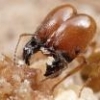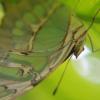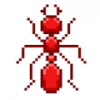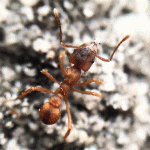My Pheidole pilifera queen that I captured on August 3rd has done well and has her first nanitic! So I think it's time to journalize them. (Note that this journal won't have the best photography for a while since the small plastic test tube they currently inhabit isn't the clearest.)


They appear to have a pile of at least 12 pupae. I'll feed them a piece of walnut and a dead insect soon, the queen is looking rather thin.





















